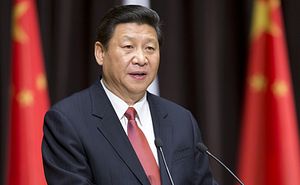Until now, the “Maritime Silk Road” (MSR) was China’s pitch to ASEAN, promising to deepen trade and cooperation between the PRC and various Southeast Asian countries. Xi Jinping coined the concept late last year and has been marketing it ever since. It appears now that Xi has expanded the reach of the MSR to India; China extended an invitation for India to join the MSR during the recent 17th round of border talks between the Special Representatives of the two countries in New Delhi.
Chinese Special Representative Yang Jiechi presented the invitation to Indian National Security Adviser Shivshankar Menon. India has accepted the invitation although it is not entirely clear what it entails at this point.
Sri Lanka, whose foreign minister G.L. Peiris was just in Beijing, is also an MSR participant. Chinese foreign ministry spokesperson Hua Chunying indicated that the MSR is a flexible tool in China’s foreign policy at the moment. “This initiative is just an idea for cooperation. It is an open ended platform. The purpose is to integrate all kinds of ongoing cooperation especially cooperation on connectivity in the spirit of (ancient) silk road so that they can connect with each other and promote each other and accelerate regional countries’ common development,” she said.
“In this end China adopts an open attitude. We also hope to see good suggestions from other countries so as to substantiate this idea,” she added.
Including India in the MSR appears logical for China given the recent bids to push forward with the Bangladesh-China-India-Myanmar (BCIM) economic corridor. The four states held multilateral talks at the end of 2013 to draw up a timetable for the plan which would provide broad economic connectivity. The BCIM Joint Study Group concluded that the plan would ““advance multi-modal connectivity, harness the economic complementarities, promote investment and trade and facilitate people-to-people contacts.”
Generally, diplomats and officials in the region see the MSR as a bid to reframe China’s rise in a non-threatening way. The invitation for India to join the MSR, for example, comes just a week after China held rare naval exercises out of the Sunda Strait in the waters of the eastern Indian Ocean.
For Indian strategists with an eye on China, the traditional concern has been the idea that China, via a series of port facilities in the South China Sea, is establishing a “String of Pearls” to contain India. As Shannon Tiezzi writes over at our China Power blog, the MSR has several parallels to the “string of pearls” idea (a phrase coined by U.S. defense contractor Booz Allen Hamilton).
The MSR remains an ambiguous tool of Chinese foreign policy at the point, but it will be one to watch in the coming years. What it does accomplish is offer Beijing a sort of centrality that the historic Silk Road couldn’t. The appeal of the MSR concept for Xi, a native of Shaanxi province – a terminus of the historic Silk Road – isn’t difficult to grasp. Reframing China’s interests in the Asia-Pacific’s maritime commons could serve to assuage concerns among neighbors often skeptical of China’s nefarious intentions.

































